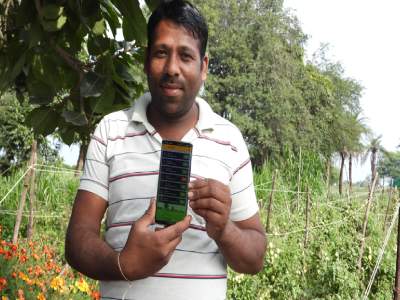
Dharmendra Yadav, once a dedicated
school teacher, made a life-changing decision to return to his roots in Village
Limbadit, District Ujjain, Madhya Pradesh. Driven by a deep passion for
agriculture and a desire to contribute to healthier communities, he left behind
his teaching career to take up farming full-time on his ancestral land.
However, this journey was not without
its challenges. Like many farmers in his region, Dharmendra faced water
scarcity, weed infestation, pest attacks, and unpredictable weather, all of
which made farming a difficult venture. The instability of market prices and
limited access to reliable farming knowledge added to his burden.
With support from the Good
Farming-Good Food-Good Health programme, Dharmendra began to adopt a range of
sustainable and efficient agricultural practices that transformed both his land
and his livelihood. Through farmer-centric training sessions and demonstrations
held at the village level, Dharmendra was introduced to climate-resilient
farming methods focused on water efficiency, soil health, and safe pest
control.
The beginning of transformation through
water-efficient techniques
Under this programme, Dharmendra
implemented drip irrigation and mulching—two critical interventions that
significantly enhanced his farm's productivity.
- Drip irrigation allowed Dharmendra to deliver water
directly to the roots of his plants, minimizing evaporation and water
wastage. This precise approach improved water use efficiency, ensured
healthy plant growth, and reduced the risk of water-borne diseases.
- Mulching created a protective layer around his crops,
reducing soil moisture loss, controlling weeds, preventing soil erosion,
and improving soil temperature and structure. Over time, the decomposed
organic mulch enriched the soil, enhancing fertility and promoting
microbial activity.
Impressed by the positive impact,
Dharmendra is now preparing for organic mulching, taking another step toward
eco-friendly agriculture.
A season of success: Tomato cultivation
In August 2023, Dharmendra cultivated
tomatoes on half an acre of land using mulching and drip irrigation. The
results were remarkable. We started harvesting tomatoes every alternate day
just 20 days after planting, he shared. By December, we had already sold 14
crates worth ₹10,000, and we earned an additional ₹30,000 by April 2024. The
quality of our produce is high, and that’s bringing us better prices in the
market.
Low-cost, eco-friendly pest management
Instead of relying on chemical
pesticides, Dharmendra adopted natural pest control methods, including the use
of trap crops such as French marigold and bhindi (okra), which helped deter
pests and reduce pesticide costs by over 60%. He also implemented string
training techniques for tomato plants, lifting them off the ground to prevent
pest and fungal infections while ensuring better air circulation and plant
health.
Informed decisions through weather awareness
Dharmendra also credits weather
advisories shared through the programme for helping him avoid losses. In
November, I was about to irrigate my wheat and masoor (lentil) crops. But
thanks to the advance alerts about unseasonal rain, I delayed irrigation and
avoided crop damage. I also saved 15 days worth of water usage, he said.
Besides being a lead
farmer, Dharmendra is also a member of the Board of Directors in Sadbhawna
Kisan Farmer Producer Company (in Makdon block), a group of more than 300
farmers registered in February 2021, who are involved in the production and
sale of mustard seeds. Arjun, Dharmen s brother, states, The goal is to spread
knowledge of regenerative farming among the 350 farmers in the cluster. Right
now, 50 farmers are practicing it, with many more visiting our farm daily to
see and learn about things they wouldn’t have otherwise known. In fact, many of
them are now growing crops they had never before grown in their lives.




